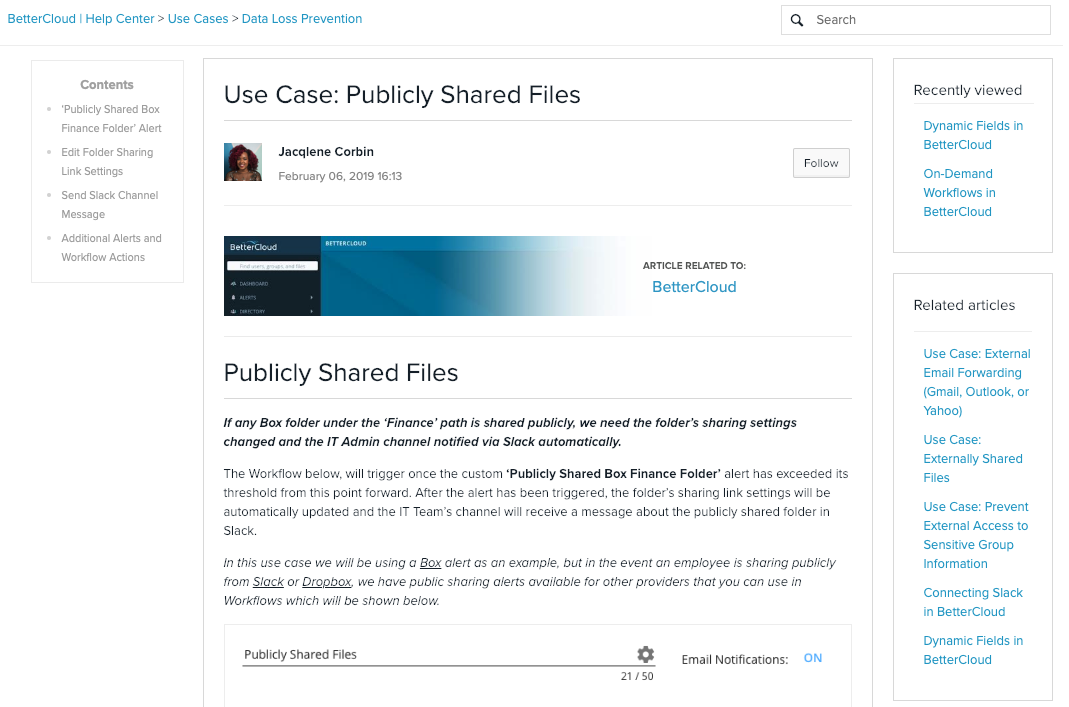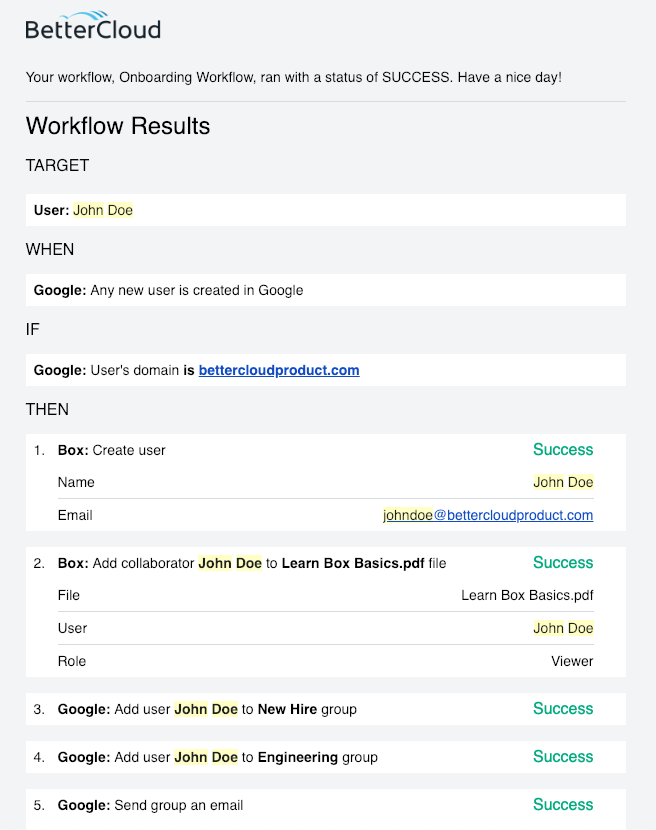New BetterCloud Updates
We are excited to announce the release of new enhancements and upgrades that will make managing and securing your SaaS applications with BetterCloud easier than ever.
Windowing, a time-based condition for Activity-based Alerts
Activity-based Alerts, available in BetterCloud for G Suite, Okta, Box, and Dropbox, help you surface the user activity that correlates with potential security concerns in these applications. These alerts include failed logins, file downloads, and other time-sensitive user activities.
Previously in BetterCloud, you could alert on these activities, but it was tough to differentiate between real security concerns and false positives. Now, with the release of Windowing, you can create precise alerts that only trigger when that activity occurs a specified amount of times within a specified time period. For example, instead of a disruptive alert each time a user downloads a file, you can customize the alert to notify you when a user downloads five confidential files within 10 minutes.
By applying advanced conditions like Windowing to your Activity-based Alerts, you receive a powerful data point to help you correlate suspicious cross-application activity. The precision of these alerts also allows you to enforce powerful security policies that don’t create friction for end users.
Pro and Enterprise customers can find Windowing under Conditions when creating or editing an Activity-based Alert.

Discover Top Use Cases in Our Help Center
We are excited to reintroduce the updated Use Cases section in our Help Center. These use cases will help you uncover blind spots, give you an idea of how to utilize the power and flexibility of BetterCloud, and inspire your creativity to help address your organization’s challenges. You can even submit your own examples that you would like to see in our Help Center! Check out an example below.

Improvements to Workflow Notifications
Based on customer feedback, we’ve made improvements to BetterCloud’s Workflow Notifications, the email summary that informs you of the results of your workflows. In our first iteration, we were able to eliminate the pain of needing to log in to BetterCloud in order to view the results of a workflow. With this update, we’re giving you an enhanced version of Workflow Notifications that packs in more information about the workflow and gives admins peace of mind that each step of a workflow ran as planned.
Workflow notifications can be enabled when creating or editing a workflow in BetterCloud.

New Office 365 Management Actions
We’ve added five new actions in BetterCloud to make the management of Office 365 easier for admins. These new actions can be found in Action Engine or added to an automated workflow. For example, you can remove a user from all of their groups as part of an offboarding workflow or delete a group when it’s no longer useful for users.
New Office 365 Actions:
Add Group Owner
Remove group owner
Edit User type
Remove user(s) from all groups (now an option for existing Remove Member action)
Delete Group

